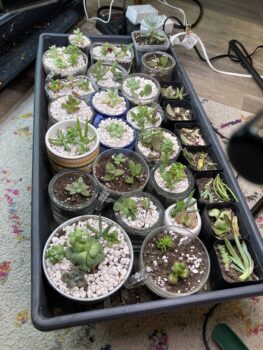Your cart is currently empty!
Author: Kate
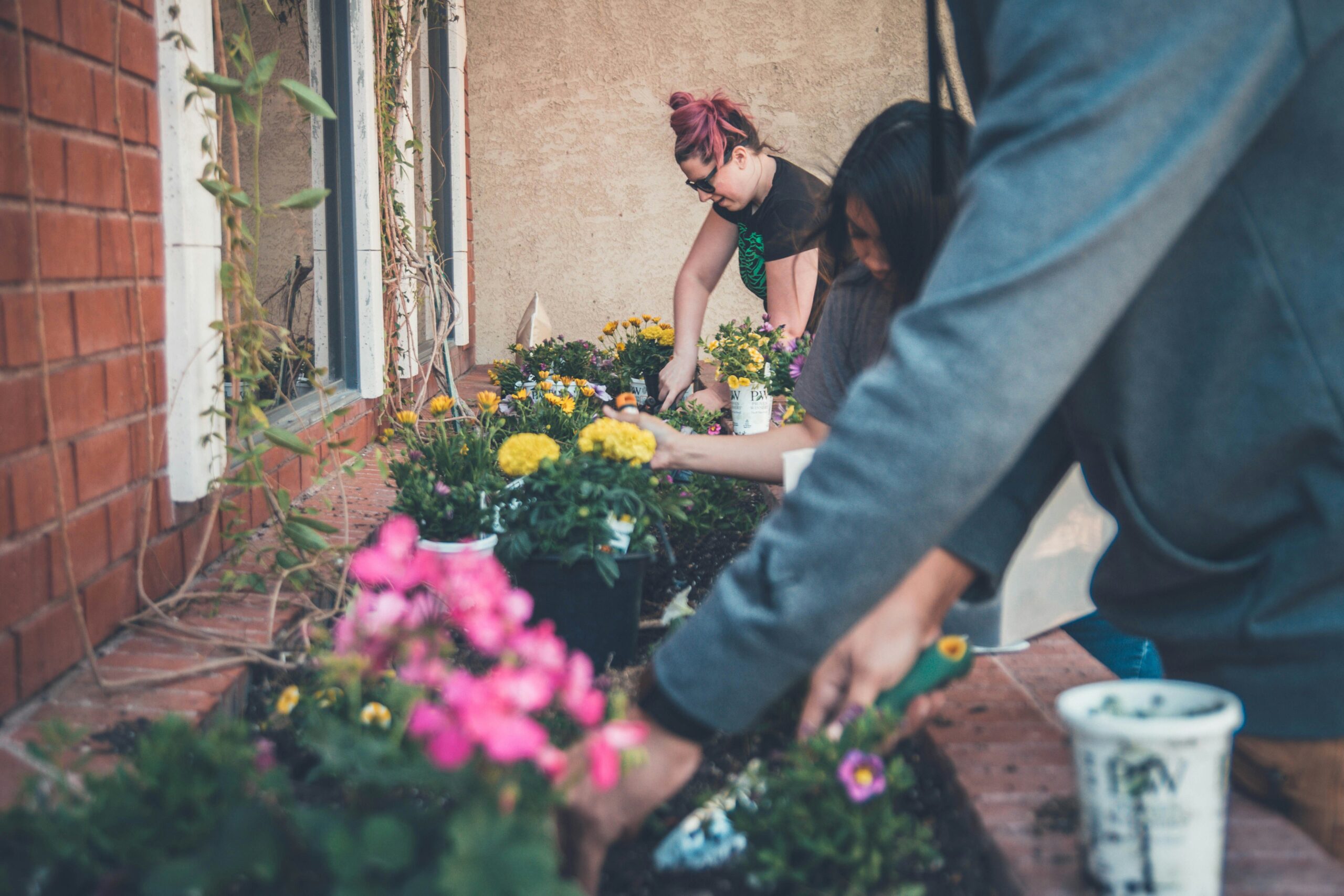
Plant and Garden Communities
While there may not be specific societies solely dedicated to Coleus plants, there are many gardening organizations and plant enthusiast groups that include Coleus in their discussions and activities.
Here are some resources to connect with other Coleus enthusiasts:
Online Communities:
- Reddit: Subreddits like r/houseplants and r/gardening are active communities where you can connect with other plant enthusiasts and discuss Coleus care tips.
- Dave’s Garden: This popular gardening forum has many discussions on Coleus, including cultivation techniques, pest control, and cultivar recommendations.
- PlantForums: This forum is dedicated to plant discussions, including Coleus. You can find information on specific cultivars, care tips, and troubleshooting advice.
Local Gardening Clubs and Societies:
- Local Horticultural Societies: These organizations often host events, workshops, and plant swaps, where you can connect with other gardeners and learn about Coleus.
- Community Gardens: These community-based gardens can provide opportunities to share knowledge and experience with other gardeners.
By joining these communities, you can connect with like-minded individuals, share your experiences, and learn from others.
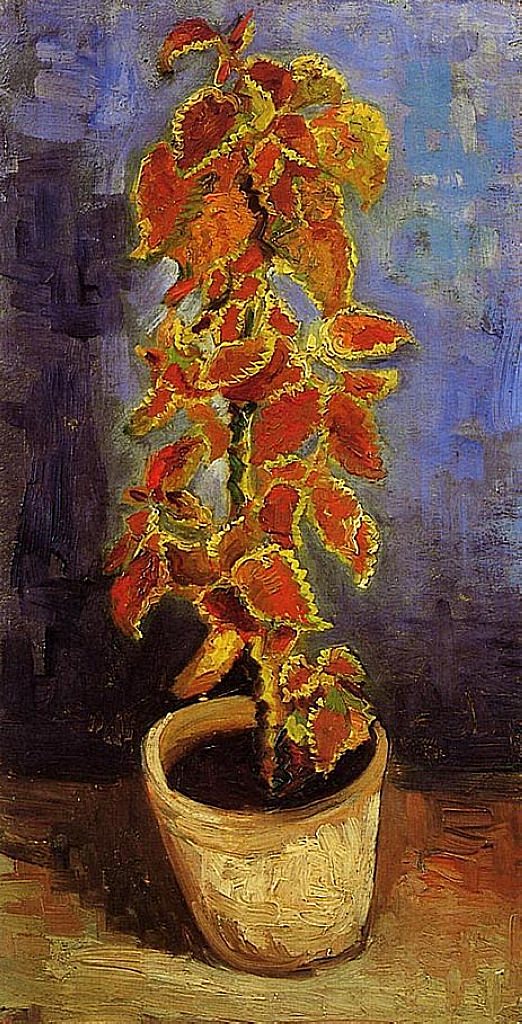
Coleus: A Living Flame – Poem Lyrics
In sunlit pots, a vibrant sprawl, The coleus, leaves that rise and fall. A tapestry of color bright, Emerald, crimson, gold, and white.
Veined and scalloped, edged with lace, A kaleidoscope in sun’s embrace. From emerald depths to ruby’s fire, Each leaf a canvas, set afire.
No two the same, a playful dance, A living flame, a shifting glance. They whisper tales of summer’s hum, Of warmth and life, when days are young.
Though winter’s chill may steal the light, Their spirit burns, a beacon bright. A promise whispered, soft and low, Of colors yet to come, you know.
The coleus stands, a verdant sight, A splash of color, warm and bright. Its leaves unfurl, a painted scene, A masterpiece of nature’s sheen.
From ruby hues to emerald green, Each leaf a jewel, a vibrant queen. They dance and sway in summer’s breeze, A living canvas, full of ease.
A tapestry woven, thread by thread, A garden’s gem, where joy is spread. The coleus thrives, a joyful sight, A burst of color, day and night.

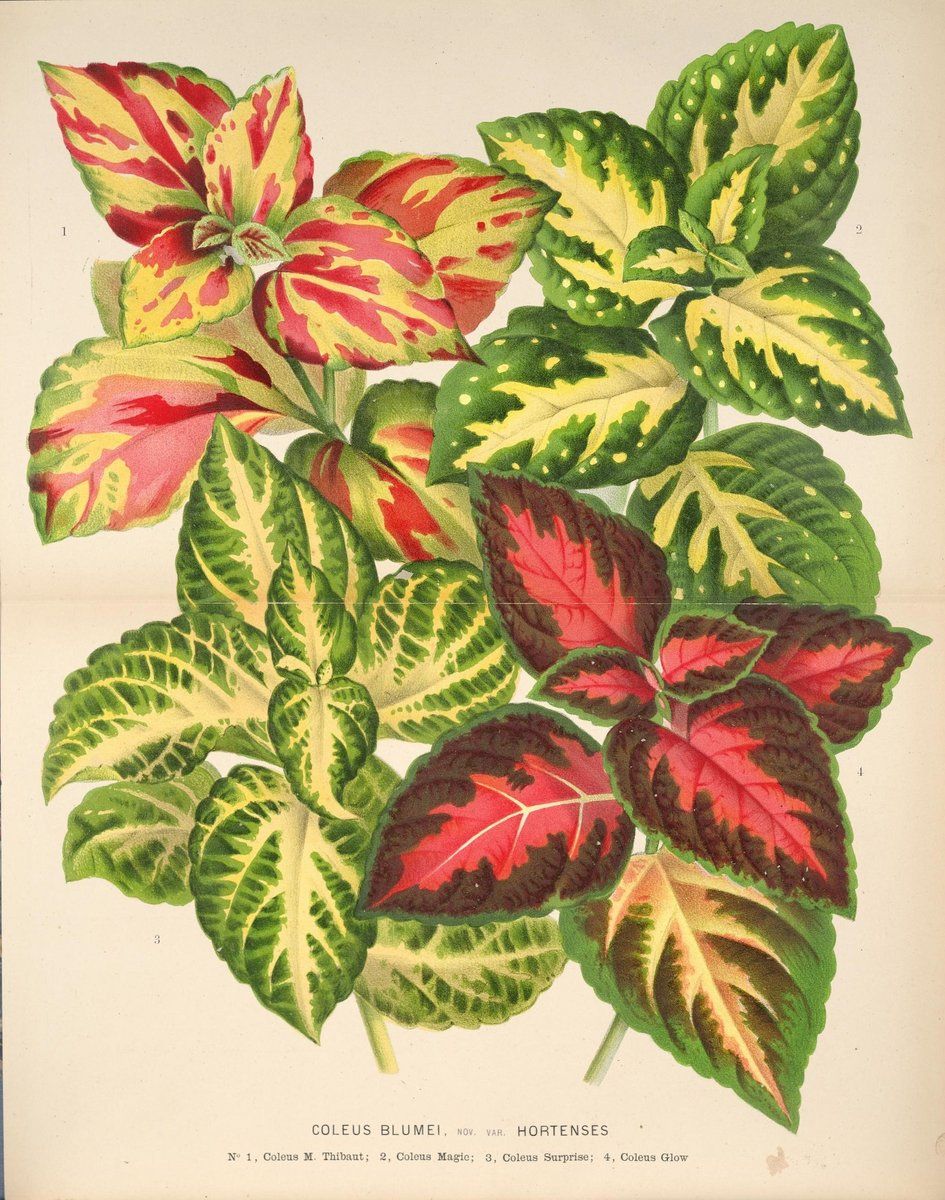
Coleus History
Coleus, originally known as Solenostemon scutellarioides, has a fascinating history that dates back to the 19th century. Native to tropical regions of Southeast Asia, India, Africa, and Australia, Coleus was first introduced to Europe in the mid-1800s by Dutch botanist Karl Ludwig Blume.

In the Victorian era, Coleus plants gained immense popularity due to their vibrant foliage and ease of care. They were commonly used in ornamental gardens and as indoor houseplants. Victorian gardeners experimented with breeding and hybridization, resulting in a wide variety of colorful cultivars.
The popularity of Coleus waned in the 20th century, but it has experienced a resurgence in recent years. Today, Coleus is celebrated for its striking foliage, low-maintenance nature, and versatility. It is a beloved plant among gardeners and plant enthusiasts worldwide.
To find specific records of Victorian-era Coleus plants, you might want to explore the following resources:
Botanical Gardens and Historical Societies:
- Royal Botanic Garden, Kew: This renowned institution has extensive historical records and plant collections.
- The New York Botanical Garden: This garden has a rich history and may have records of Victorian-era plant collections.
- Local Historical Societies: Check with local historical societies or museums in areas with strong gardening traditions. They may have old gardening books, photographs, or oral histories that mention Victorian-era Coleus.
Online Archives and Databases:
- JSTOR: This digital library provides access to academic journals, books, and primary sources. Search for articles on Victorian-era gardening or the history of specific plant species.
- Google Books: This platform allows you to search for digitized books, including old gardening manuals and botanical texts.
- Internet Archive: This digital library offers access to a vast collection of historical documents, including books, articles, and images.
Antique and Vintage Stores:
- Antique Stores: Check for old gardening books or botanical prints that may feature Victorian-era Coleus.
- Online Marketplaces: Websites like eBay and Etsy can be great sources for vintage botanical prints and gardening books.
Remember, as you delve into the historical records, you may encounter different botanical names for Coleus. The plant’s classification has changed over time, so be aware of synonyms and historical references.
By exploring these resources, you can uncover fascinating details about the history of Coleus and its role in Victorian-era gardening.
Coleus plants were a favorite among Victorian gardeners due to their vibrant foliage and versatility. They were primarily used in the following ways:
1. Carpet Bedding:
- Coleus plants were planted in intricate patterns to create stunning carpets of color in gardens.
- Different varieties were used to form intricate designs, borders, and geometric shapes.
- This technique was popular in formal gardens and public parks.
2. Indoor Plants:
- Coleus plants were often grown indoors as houseplants, adding a touch of color and life to Victorian homes.
- They were displayed in decorative pots and window boxes.
3. Edging and Borders:
- Coleus plants were used to create colorful borders around flower beds and walkways.
- They were also used to edge garden paths and create a sense of enclosure.
4. Container Gardening:
- Coleus plants were grown in pots and containers, adding a vibrant touch to balconies, patios, and porches.
- They were often combined with other flowering plants to create beautiful arrangements.
In addition to their aesthetic appeal, Coleus plants were also valued for their ease of care and ability to thrive in various conditions. They were popular among both amateur and professional gardeners, and their popularity continues to this day.
The decline in Coleus popularity during the 20th century can be attributed to a few factors:
- Changing Fashion Trends: Gardening trends shifted towards simpler, more naturalistic styles. The bold, vibrant colors of Coleus, which were popular in the Victorian era, became less fashionable.
- Rise of Modern Hybrids: The introduction of new, more uniform hybrid varieties of annual flowers, such as petunias and marigolds, overshadowed the popularity of Coleus. These new varieties were easier to grow from seed and offered a wider range of colors and forms.
- Focus on Low-Maintenance Plants: As people’s lifestyles became busier, there was a growing demand for low-maintenance plants. While Coleus is relatively easy to care for, it may not have been as popular as other, even lower-maintenance plants.
However, in recent years, Coleus has experienced a resurgence in popularity. This renewed interest can be attributed to several factors:
- Increased appreciation for unique foliage: Gardeners are now seeking out plants with interesting leaf shapes, colors, and textures. Coleus, with its diverse range of foliage, fits perfectly into this trend.
- Growing interest in container gardening: Coleus is an excellent choice for container gardening, as it can add a vibrant splash of color to patios, balconies, and indoor spaces.
- Increased availability of new cultivars: Breeders have developed many new and exciting Coleus cultivars, offering a wider range of colors, patterns, and leaf shapes.
- The rise of social media: Social media platforms like Instagram and Pinterest have helped to popularize Coleus, with many people sharing photos of their beautiful plants.
As a result of these factors, Coleus has become a popular choice for gardeners once again, adding a touch of tropical beauty to gardens and homes around the world.
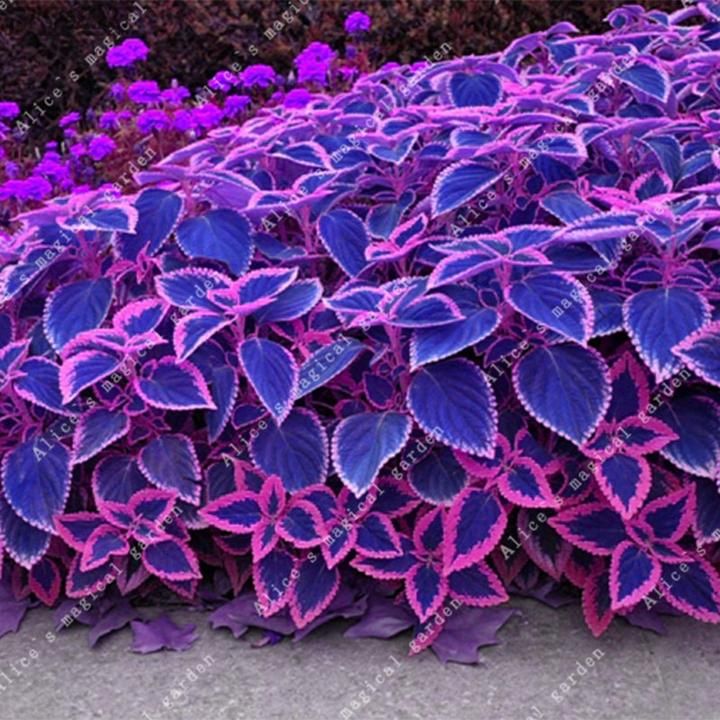
Identifying Potential Scams in Plant Sales – No true-blue color or pigment in nature
While most online plant sellers are reputable, it’s important to be cautious and look for red flags. Here are some tips to help you identify potential scams:








- Unrealistic Prices: If a deal seems too good to be true, it probably is. Be wary of sellers offering extremely low prices for rare or sought-after plants.
- Poor Quality Photos: Low-resolution or blurry images can be a sign of a scam. Reputable sellers will typically provide clear and detailed photos of their plants.
- Lack of Seller Information: Be cautious of sellers who provide limited information about themselves or their business. Legitimate sellers are usually transparent about their operations.
- Unusual Payment Methods: Be wary of sellers who insist on unusual payment methods, such as wire transfers or gift cards. Stick to trusted payment methods like PayPal or credit cards.
- Negative Reviews or Complaints: Check online reviews and forums for any negative feedback about the seller.
- Unrealistic Shipping Promises: Be cautious of sellers who promise incredibly fast shipping times, especially for international orders.
- Overly Aggressive Sales Tactics: If a seller is pressuring you to buy immediately or using high-pressure sales tactics, it may be a red flag.
Tips for Safe Online Plant Shopping:
- Buy from Reputable Sellers: Stick to well-known online retailers or reputable sellers with positive reviews.
- Read Reviews: Check customer reviews to gauge the seller’s reliability and the quality of their plants.
- Ask Questions: Don’t hesitate to ask the seller questions about the plant’s condition, shipping, and care instructions.
- Use Secure Payment Methods: Use trusted payment methods like PayPal or credit cards to protect your financial information.
- Be Patient: Good things take time. Don’t rush into a purchase if you’re unsure.
By following these tips, you can protect yourself from scams and ensure a positive online plant-buying experience.
Tips for Buying Coleus Plants Online
When buying Coleus plants online, it’s important to choose reputable sellers and be mindful of potential shipping risks. Here are some tips to help you make informed purchases:
- Check Seller Reputation:
- Look for sellers with positive reviews and a history of satisfied customers.
- Check their feedback ratings on platforms like eBay or Etsy.
- Look for sellers who specialize in plants and have experience shipping them safely.
- Consider Shipping Time:
- Be aware of the shipping time and potential weather conditions.
- Choose sellers who ship quickly and use proper packaging to protect the plants during transit.
- Consider purchasing plants from sellers in your local area to minimize shipping time and potential damage.
- Inspect Plants Upon Arrival:
- Check the plant for signs of damage, pests, or diseases.
- If the plant arrives damaged, contact the seller immediately to report the issue.
- Acclimate Plants Gradually:
- Gradually acclimate your new Coleus plant to your home environment to reduce stress.
- Start by placing it in a shaded area and gradually expose it to more light.
- Ask Questions:
- Don’t hesitate to ask the seller questions about the plant’s care requirements, shipping methods, and any other concerns you may have.
By following these tips, you can increase your chances of receiving healthy and vibrant Coleus plants from online sellers.
- Check Seller Reputation:
Rare and Expensive Coleus Cultivars
Here are some of the more rare and expensive Coleus cultivars:
- Sadiki’s Quetzal: This stunning variety features vibrant green and yellow leaves with deep burgundy veins.
- Marrakesh: A striking coleus with large, ruffled leaves in shades of burgundy, green, and yellow.
- Under the Sea Red Coral: This unique coleus has deep red, ruffled leaves with a coral-like appearance.
- Merlin’s Magic: A magical variety with intricate patterns of green, yellow, and purple on its leaves.
- Hottie: This fiery coleus boasts bright red and orange leaves with a touch of green.
- Twist and Twirl: This variety features twisted and curled leaves in various shades of green, yellow, and red.
- Caracas: A beautiful coleus with large, velvety leaves in shades of burgundy, green, and yellow.
- Royal Pineapple Brandy: This unique variety has large, ruffled leaves with a combination of green, yellow, and red hues.
Please note that the availability and pricing of these rare cultivars can vary. It’s often best to check online plant nurseries or specialty plant shops for the most current information.
Remember to provide optimal care for these rare varieties to ensure their health and longevity.
Coleus: A Kaleidoscope of Shapes
Coleus plants are not only known for their vibrant colors but also for their diverse leaf shapes. Here are some of the most common shapes you’ll encounter:
- Ovate: These leaves are oval-shaped, with a rounded base and a pointed tip.
- Lanceolate: Lanceolate leaves are long and narrow, tapering towards both ends.
- Serrated: These leaves have jagged edges, resembling a saw blade.
- Wavy: Wavy-edged leaves add a playful touch to the plant.
- Fishnet: This unique leaf shape features a lacy, almost see-through appearance.
Remember, the beauty of coleus lies in their diversity. By combining different shapes and colors, you can create stunning arrangements that will add a vibrant touch to your garden or indoor space.
Coleus: A Colorful Delight
Coleus, also known as painted nettle, is a popular plant prized for its vibrant and diverse foliage. With a wide range of leaf shapes, sizes, and colors, coleus can add a splash of color to any indoor or outdoor space.
Characteristics of Coleus
- Foliage: Coleus plants are renowned for their stunning foliage, which can range from deep greens and purples to bright reds, yellows, and oranges. The leaves can be plain, variegated, or patterned, often with intricate veins and markings.
- Growth Habit: Coleus plants can be grown as annuals or perennials, depending on the climate. They can be grown as bushy plants or trained as vines.
- Flowering: While coleus plants do produce flowers, they are typically removed to encourage bushier growth and vibrant foliage.
Caring for Your Coleus Plant
- Light: Coleus plants thrive in bright, indirect light. Avoid exposing them to direct sunlight, especially during the hottest parts of the day.
- Water: Keep the soil consistently moist, but avoid overwatering. Allow the top inch of soil to dry out slightly between waterings.
- Temperature: Coleus plants prefer warm temperatures. Avoid exposing them to cold drafts or freezing temperatures.
- Humidity: While they can tolerate average humidity levels, increased humidity can help maintain vibrant foliage.
- Fertilizer: Feed your coleus plant with a balanced liquid fertilizer every 2-4 weeks during the growing season.
- Pruning: Regular pruning can help maintain a bushy shape and encourage new growth. Pinch back the tips of the stems to promote branching.
Common Coleus Varieties
- Wizard Series: Known for their compact size and vibrant colors.
- Kong Series: Features large, bold leaves and striking color combinations.
- Fishnet Coleus: Unique for its lacy, almost see-through leaves.
- Black Dragon: A dramatic variety with deep, almost black leaves.
- Redhead Coleus: A striking variety with bright red leaves and a contrasting green center.
By following these simple care tips, you can enjoy the beauty of coleus plants year-round. Whether you’re a seasoned gardener or a beginner, coleus is a great plant to add to your collection.
Would you like to learn more about a specific aspect of coleus care or cultivation?

